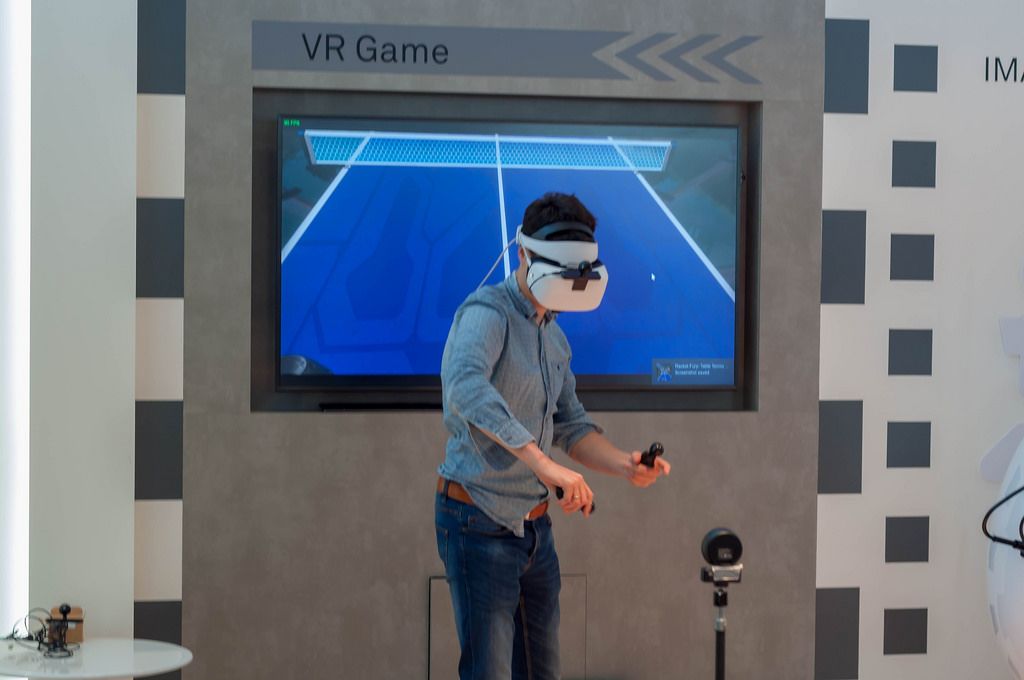Virtual Reality (VR) and Augmented Reality (AR) are reshaping the world of gaming, offering immersive experiences that go beyond traditional screens. From fully interactive virtual worlds to real-time AR overlays, these technologies are revolutionizing how players interact with digital environments.
With major tech companies investing heavily in VR headsets, AR glasses, and Metaverse gaming, the question arises: Will VR and AR become the future of online gaming?
In this article, we explore how VR and AR are transforming gaming, their impact on different genres, and what the future holds for these groundbreaking technologies.

1. Understanding VR and AR: What’s the Difference?
Before diving into gaming applications, let’s clarify the difference between VR and AR:
a) Virtual Reality (VR)
- Fully immersive experience where players enter a digital world.
- Requires VR headsets like Meta Quest, PlayStation VR, HTC Vive, or Valve Index.
- Used in first-person gaming, simulations, and Metaverse environments.
b) Augmented Reality (AR)
- Overlays digital elements onto the real world.
- Used in mobile games like Pokémon GO, Ingress, and Minecraft Earth.
- Can be experienced through smartphones, AR glasses, or headsets.
Both technologies enhance how we experience games, but they serve different purposes and audiences.
2. How VR is Revolutionizing Online Gaming
VR gaming offers unmatched immersion, allowing players to feel like they’re inside the game world. Here’s how it’s changing online gaming:
a) Fully Immersive Gameplay
- VR transports players into 3D worlds where they can interact with objects, NPCs, and other players.
- Popular VR games include:
- Half-Life: Alyx – A full-scale VR shooter with advanced physics and storytelling.
- Beat Saber – A rhythm-based VR game that requires quick reflexes.
- VRChat – A social multiplayer platform where players interact as avatars.
b) VR eSports and Competitive Gaming
- VR eSports tournaments are emerging, with games like:
- Echo VR – A zero-gravity multiplayer game.
- Pavlov VR – A tactical shooter similar to Counter-Strike.
- Onward – A military-style VR FPS.
- VR gaming adds a physical element, requiring players to move, aim, and react in real-time.
c) Social Interaction in Virtual Worlds
- Platforms like VRChat and Horizon Worlds let players explore virtual spaces, meet others, and attend live events.
- Companies like Meta (formerly Facebook) are investing in VR Metaverse experiences.
d) VR for Cloud Gaming
- Cloud gaming services (like GeForce Now and Xbox Cloud Gaming) are expected to support VR streaming, allowing players to access VR games without high-end hardware.
3. The Rise of AR in Online Gaming
AR gaming blends virtual and real-world elements, making it more accessible than VR (since it doesn’t require a headset).
a) Mobile AR Gaming: The Success of Pokémon GO
- Pokémon GO pioneered AR gaming, allowing players to catch virtual creatures in real-world locations.
- The game’s success led to other AR-based titles, including:
- Harry Potter: Wizards Unite (now discontinued)
- Minecraft Earth
- The Walking Dead: Our World
b) AR in Multiplayer and eSports
- Competitive AR games could introduce real-time AR overlays, enhancing live eSports tournaments.
- AR glasses, like Apple Vision Pro and Microsoft HoloLens, will provide interactive HUDs (heads-up displays) for competitive gaming.
c) AR in Console and PC Games
- Consoles like the PlayStation 5 and Xbox Series X could introduce AR-compatible games using camera-based tracking and smart glasses.
- Microsoft’s HoloLens 2 is being tested for AR-enhanced gaming experiences.
4. Challenges and Limitations of VR and AR in Gaming
Despite their potential, VR and AR face challenges that must be addressed for mainstream adoption.
a) High Cost of VR Hardware
- Premium VR headsets (like Valve Index or HTC Vive) can cost $600-$1000+, making them less accessible.
- However, affordable options like Meta Quest 2 ($299-$399) are helping bring VR to the masses.
b) Motion Sickness and Physical Limitations
- Some players experience motion sickness in VR due to latency or movement tracking issues.
- AR games require physical movement, which may not be ideal for all players.
c) Battery Life and Mobile AR Limitations
- AR games drain smartphone batteries quickly, limiting gameplay duration.
- Future AR glasses need better battery efficiency to be practical for extended use.
d) Lack of VR and AR Game Titles
- While VR and AR are growing, the number of high-quality games is still limited compared to traditional gaming.
- Developers need more incentives to create AAA VR/AR experiences.
5. The Future of VR and AR in Gaming
Despite the challenges, the future of VR and AR gaming looks promising. Here’s what we can expect:
a) The Rise of the Metaverse
- Companies like Meta, Google, and Apple are building Metaverse environments where players can game, socialize, and work in virtual spaces.
- Metaverse gaming could combine VR, AR, and AI to create persistent, interactive worlds.
b) AI-Powered VR and AR Gaming
- AI will create smarter NPCs that react dynamically to player actions.
- Procedural content generation will make VR and AR worlds feel more realistic and unpredictable.
c) Wireless VR and AR Glasses
- Future VR headsets will be wireless, lightweight, and more comfortable.
- AR glasses will replace smartphones for gaming, offering real-time interactive HUDs.
d) Cloud-Based VR and AR Gaming
- 5G and cloud gaming will allow VR/AR games to run on any device, making high-quality VR accessible to everyone.
- Subscription-based VR gaming services (like PlayStation VR Plus) could emerge.
e) More Cross-Platform VR/AR Experiences
- Expect VR and traditional gaming to merge, allowing players on PC, console, and VR to compete together.
- AR and VR could integrate with physical spaces, making multiplayer gaming more interactive.
6. Conclusion
VR and AR are pushing gaming beyond screens, offering immersive, interactive, and engaging experiences. While VR provides fully immersive worlds, AR enhances real-world interactions with digital elements.
As technology advances, hardware becomes more affordable, and developers create new experiences, VR and AR gaming will continue to evolve. Whether it’s competing in a VR eSports tournament, exploring the Metaverse, or playing an AR-enhanced game in your backyard, the future of gaming is more immersive than ever.
While we may not be ready to abandon traditional screens just yet, VR and AR are undoubtedly shaping the future of online gaming—one step (or teleport) at a time.




